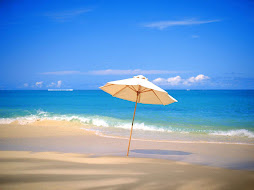8.3 and 8.4 Summary, Vocab and CC
8.3- No Vocab
8.3 summary
With each turn of the Calvin cycle, there are chemical inputs and output
6 CO2 + 6 H2O C6H12O6 + 6 O2
By converting light energy to chemical energy, photosynthesis is the first step in the flow of energy through an ecosystem.
Calvin cycle is like a sugar factory inside a chloroplast. It is a cycle because, like the Krebs cycle in cellular respiration, the starting material is regenerated each time the process occurs.
8.3 CC
1. What are the inputs and outputs of the Calvin cycle?
The inputs of the Calvin cycle is three CO2's, 6 ATP, 6 ADP, 6 Phosphates, NADPH and NADP+. The output of the Calvin cycle is one GP3.
2. Which stage of photosynthesis uses each reactant from the overall photosynthesis equation? Which stage generates each product from the overall photosynthesis equation?
The stage of photosynthesis that uses each reactant from the overall photosynthesis equation is the Calvin cycle.
3. Why is the Calvin cycle called a cycle?
It is called a cycle because, like the Krebs cycle in cellular respiration, the starting material is regenerated each time the process occurs.
4. What molecule is the direct product of photosynthesis? How is that molecule then used by plant cells?
The direct product is Starch and Oxygen. The molecule is then used by the plant cells for building the basic materials of a plant and also nurturing. Some energy is stored for the next reaction to take place.
Chapter 8.4 Vocab
Carbon Cycle- the cycle where carbon molecule moves from inorganic molecules and organic molecules and back.
Greenhouse effect-process by which atmospheric gases trap heat close to Earth's surface and prevent it from escaping into space
Chapter 8.4 Summary
Things that occur globally can be traced back to the works of the mitochondria and chloroplast.
Through photosynthesis, producers such as grass convert inorganic carbon dioxide to organic compounds.
A key element of the Carbon cycle is carbon dioxide.
The total amount of organisms in the world plays a very significant part in the concentration of carbon dioxide in the atmosphere.
Chapter 8.4 CC
1. Give an example of carbon moving from an inorganic compound to an organic compound in the carbon cycle. Give an example of carbon moving from an organic to an inorganic compound.
Carbon moving from an inorganic compound to an organic compound- plants converting inorganic CO2 into organic things like Glucose.
Carbon moving from an organic to an inorganic compound- the dissolved sugar that goes back into the atmosphere when burned and it turns into CO2
2. How is carbon dioxide important to Earth's climate?
Carbon dioxide is important to Earth's climate because it plays a part in the making of the atmosphere and it provides plants to have enough CO2 to make photosynthesis happen. The plants then produce oxygen and many other things.















